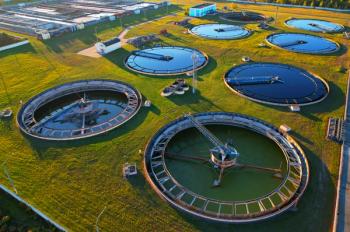
Advanced Nanomaterials
John Stephens of Bidwell Training Center (Pittsburgh, Pennsylvania) presides over this session, to be held in Room 118B and starting at 8:30 am.
John Stephens of Bidwell Training Center (Pittsburgh, Pennsylvania) presides over this session, to be held in Room 118B and starting at 8:30 am with “Stability of Gold Nanostars in Different Chemical Environments,” presented by Lixia Zhou of Oregon State University (Corvallis, Oregon). This will be followed at 8:50 am by “Analysis of Nano-Sized Metal Oxide Particles in Food Additives,” presented by Sadia Khan of the US Food and Drug Administration.
Xiujun Li of the University of Texas (El Paso, Texas) will speak on “Multiplexed Instrument-Free Bar-Chart SpinChip Integrated with Nanoparticle-Mediated Magnetic Aptasensors for Visual Quantitative Detection of Multiple Pathogens at 9:10 am. At 9:30 am, Idris Yagzan of Kastamonu University (Kastamonu, Turkey) presents “Molecular Insight into Antimicrobial Activity of Carbohydrate Functionalized Gold Nanoparticles on Serratia Marcescens.”
At 10:05 am, Gabor Patonay of Georgia State University presents “Surface Controlled Copolymerized Fluorescent Silica Nanoparticles for Bioanylytical and Forensic Applications.” This will be followed by “Imaging Mass Cytometry for the Analysis of Nanoparticles in Cells,” presented by Jennifer Chen of York University (Toronto, Ontario, Canada) at 10:25 am.
The sessions conclude with “Microfluidic Platform for Optimizing the Formation of Nanodiscs Libraries from Whole Cell Lysate,” with Colleen Riordan of the University of Michigan (Ann Arbor, Michigan) presenting at 10:45 am, and “Development and Characterization of L-HAS Conjugated PLGA Nanoparticle for Hepatocyte Targeted Delivery of Antiviral Drug,” presented by Pramod Bhujangrao Khedekar of Nagpur University (Nagpur, Maharashtra, India), at 11:05 am.
Newsletter
Join the global community of analytical scientists who trust LCGC for insights on the latest techniques, trends, and expert solutions in chromatography.





